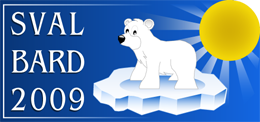The untouched land of the Svalbard islands
A small Arctic archipelago removed from the world, a group of islands which live a silent and cold existence. A tiny fragment of the planet left to itself: the Svalbard islands are as precious as delicate an ecosystem and an environment which have to be protected and safeguarded.
Svalbard: an immense park
The archipelago of the Svalbard islands is an Arctic land with no native population. The few human settlements belong to other countries whilst the territory is ruled by Norway. Svalbard belongs to everyone and nobody. Svalbard is a protected environment.
Svalbard has a very short history which goes back for just some centuries. There are not many historical figures which have contributed to shape its history, only a few whale hunters and some explorers.
It is for this reason that all historical items originating from 1945 or earlier are protected. Some people think keeping all sorts of rubbish from the past is absurd but it is not as strange as it might look: these things belong to Svalbard history.
This shows that people really care about this land. This consideration towards the environment in Svalbard is in marked contrast to the Italian destructive attitude towards monuments and historical buildings. On Svalbard, people really do their best to protect their treasure: the environment. It is the old story of the poor appreciating the few things they have and the rich wasting their resources.
But the Svalbard islands are not poor. Their richness lies in the unique environment of ice and cold, in the animals, in the isolation and in the silence. The richness of this place lies in the sense of magic these islands give to visitors.
Rangers and guards patrol the territory. We met two of them on the first day at the camp. They are well equipped and work to safeguard this land for a period of six weeks at a time. We spotted their tent from the boat.
Clean up Svalbard
Help in keeping Svalbard clean is a small gesture to ensure that the damage we may invariably cause to this land is reduced to an absolute minimum. During our excursions we collected pieces of plastic and other rubbish carried onto the beach by water and wind. We also found and collected objects lost by visitors who were there before us. On the last day on the first camp I found a pair of sunglasses.
Recycling on Svalbard
As the base camps we separated the different kinds of rubbish: paper, organic waste, cans, plastic and other materials.
Keeping Svalbard clean entails protecting this isolated corner of the world, this surviving wild Kingdom which deserves to remain pristine as long as possible.
What can you do to keep Svalbard clean?
You can help to collect rubbish you find on the excursions. You must follow the rules set by the guides as far as hygiene dictates and ensure all unconsumed food is not left around.
These small gestures ensure the success of the huge project which is the protection of Svalbard.

